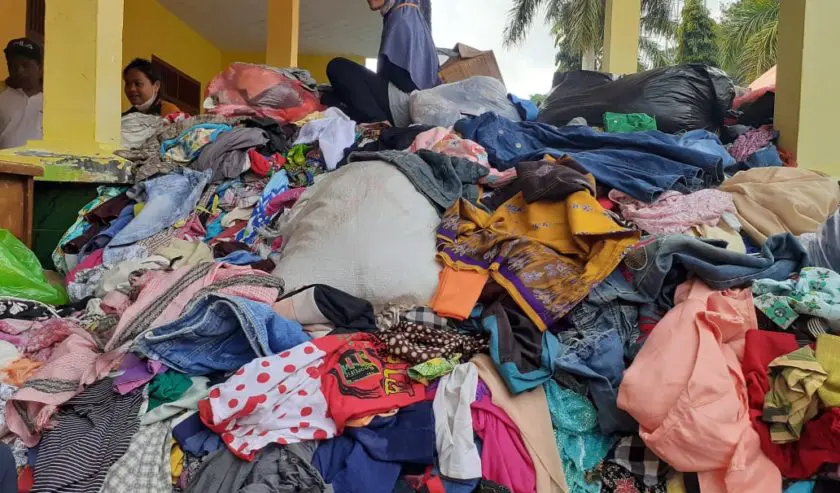Decluttering is absolutely en vogue now.
Every year, the festive and holiday season arrives, bringing with it additional goods that we need to find a home for. As a result, the New Year is the ideal moment for us to finally clear away all the clutter, clean home, and have a fresh start. Decluttering has never been more trendy or fashionable.
Most of the decluttering guides use a similar system to organize your stuff – you can either keep, sell, trash, or donate them.
Some people confuse “giving what you don’t want” (i.e. rubbish disposal) with “contribution” (or worse “blessing”). There is a distinction. The former is dumping, whereas the latter requires care. Give only what the receiver requires and in the condition that they request.
Keep in mind that the recipient is assisting you with your trash karma. Giving up what you don’t want is hardly a tremendous gesture of giving. THEY are assisting YOU.
I was amazed that Refind needed so much help removing labels since the request was for clean, de-labeled bottles. I’m delighted Jane has a willing volunteer to assist her with this.
Some principles for being a respectful donor drive supporter…
Clothes: clean and well folded.
I was amazed that Refind needed so much help removing labels since the request was for clean, de-labeled bottles. I’m delighted Jane has a willing volunteer to assist her with this.
Some principles for being a respectful donor drive supporter…
Clothes: clean and well folded.
RELEVANT SUSTAINABLE GOALS


Should I Sell, Donate, or Throw It Out ?
Most of the decluttering guides use a similar system to organize your stuff – you can either keep, sell, trash, or donate them. In my case, for a long time, whenever I decluttered my belongings, I mostly opted to give everything I thought I wasn’t going to use but was still in decent condition. I had the greatest of intentions — I just assumed that this was the easiest method to get rid of unneeded items, namely clothing. I knew I could sell them, but I felt I didn’t need the money that much, so I’d rather donate them to those who weren’t in such a fortunate situation.
I didn’t do a lot of study into donation alternatives since I was familiar with a handful of organizations and felt I could just give them my stuff and they’d make sure it ended up in a good place. It wasn’t until I read a handful of articles on the realities of donating that I began to seriously consider if this was truly the best option.

The Problematic Parts of Donating
Let’s admit it, we have an overconsumption issue. But, unfortunately, simply chucking things out won’t solve it either. The amount of stuff we buy and consume is nearly incomprehensible. And because of stuff’s short use cycles, they are abandoned at an alarming rate. We can tidy our houses and put our belongings out of sight (and mind), but they won’t miraculously vanish. Charities are increasingly unable to absorb all of this surplus. They don’t have the room, resources, or time to adequately handle it.
Many of us are still confused between “giving what you don’t want” (i.e., rubbish disposal) with “contribution” (or worse, “blessing”). There is a distinction. The former is dumping, whereas the latter requires care. Some should most likely be discarded because they are in such poor condition. Some may be repaired, but charities frequently lack the money or tools to do so, and therefore they wind up in the landfill. This isn’t limited to clothing; all types of broken and damaged items end up in donation bins. Give only what the receiver needs and in the condition that they request.

How To Responsibly Get Rid of The Stuffs You’ve Decluttered
As you must know by now, just dumping it isn’t an option. If you’d like to donate it, a basic rule of thumb is that if you wouldn’t give it to your closest friend or buy it for yourself, you shouldn’t donate it. Charity stores are not a landfill.
The most crucial premise of responsible and sustainable decluttering is the same as that of mindful consumption: we should maximize the lifespan of our items. This includes locating high-quality items, reusing them, mending minor damage, upcycling, finding alternate uses for things, and ensuring that we do everything we can to prolong their life elsewhere when we’re done with them.
Buying less and throwing away less is the only way to truly go green. The market for repurposed things is quite restricted. And when you do give stuff away, please do so with care and consideration, keeping in mind all of the limits of the charity that is the receiver as well as the dignity of the final beneficiary.
While the urge to declutter is real, Choose not to be a jerk and deal with your crap in a way that does not make life difficult for others. Will you?
The article was initially published on 9th January 2022.


